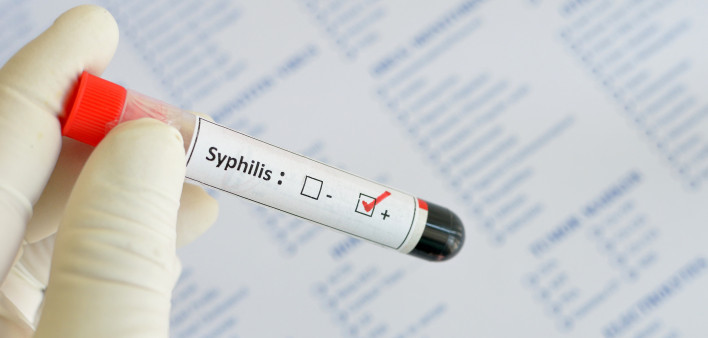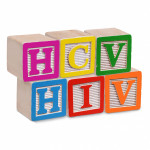Among HIV-positive women, hepatitis C virus (HCV) coinfection, injection drug use and being African American are independent risk factors for syphilis.
A recent published study indicated that while syphilis rates are highest among men who have sex with men (MSM), rates are rising among heterosexual drug users. The U.S. rate of syphilis diagnosis among infants, known as congenital syphilis, doubled in four years and hit a 20-year peak of 918 cases by 2017.
Jodie Dionne-Odom, MD, of the University of Alabama at Birmingham presented findings from the new study on HIV-positive women’s risk factors for syphilis at the 2019 Conference on Retroviruses and Opportunistic Infections (CROI) in Seattle. She and her colleagues conducted a retrospective study of 4,795 women enrolled in the U.S. Centers for AIDS Research (CFAR) Clinical Network of Integrated Clinical Systems (CNICS) Cohort. The women all made at least one HIV clinic visit between 2006 and 2016. The investigators relied on medical records data, which included health outcomes about the women that were reported every six months.

Jodie Dionne-Odom of University of Alabama at Birmingham at CROI 2019Benjamin Ryan
Of the 4,416 (92 percent) women who received testing for syphilis, 417 (9.4 percent) tested positive, and 119 of these were diagnosed with a new case of the sexually transmitted infection (STI) during the study’s follow-up period. This translated to a diagnosis rate of 7.6 cases per 1,000 cumulative years of follow-up.
The women tested for syphilis were followed for a cumulative 26,316 years. They had a median age of 47 years old. Sixty-four percent were Black, and 28 percent were white. Seventy-five percent had contracted HIV through heterosexual sex, and 18 percent had injection drug use as a transmission route. Thirty-six percent made their first CNICS clinic visit between 1995 and 2004, 36 percent did so between 2005 and 2010 and 28 percent did so between 2011 and 2016. The women made clinic visits during a median five different years and made a median three visits per year. Twenty-three percent were coinfected with HCV. Seventy-one percent had a viral load below 500. The median CD4 count was 529.
When reporting on sexual risk factors during the previous six months, 7 percent of women reported more than two sexual partners, 15 percent reported an HIV-positive partner, 52 percent reported 100 percent condom use and 14 percent reported having sex after the use of drugs or alcohol.
Looking at the proportion of women who reported a history of drug or alcohol use at their last clinic visit, 8 percent reported active use of cocaine or crack while 28 percent reported prior use. Active and prior use of crystal meth was reported by 3 percent and 11 percent of women, respectively; active and prior opioid use was reported by 3 percent and 14 percent, respectively; active and prior marijuana use was reported by 19 percent and 29 percent, respectively; and 13 percent of women reported currently engaging in problem alcohol use.
Between 2008 and 2016, the proportion of women reporting injection drug use rose, with a notable jump between 2013 and 2014.
After adjusting the data to account for various differences between the women, the investigators found that independent predictors of syphilis included having injection drug use as an HIV transmission route (associated with a 2.7-fold increased risk of syphilis), HCV coinfection (2.3-fold increased risk) and being Black compared with being white (2.4-fold increased risk). Compared with entering care between 1994 and 2004, entering care between 2005 and 2010 was associated with a 3-fold increased risk of syphilis and entering care between 2011 and 2016 was associated with a 3.4-fold increased risk. Age and HIV viral load were not independent risk factors for syphilis.
When asked at CROI why injection drug use was associated with a higher syphilis rate among these women, Dionne-Odom said the association was “likely mediated through transactional sex or other factors.”
Dionne-Odom and her colleagues have concluded that more research is needed to explore such a theory or other explanations. In the meantime, they recommend that guidelines prioritize syphilis testing among HIV-positive women who inject drugs in order to prevent mother-to-child transmission of the STI among pregnant women.
“Novel intervention studies are obviously needed to prevent syphilis infection in some of these high-risk women living with HIV,” Dionne Odom said.
To read the study abstract, click here.







Comments
Comments